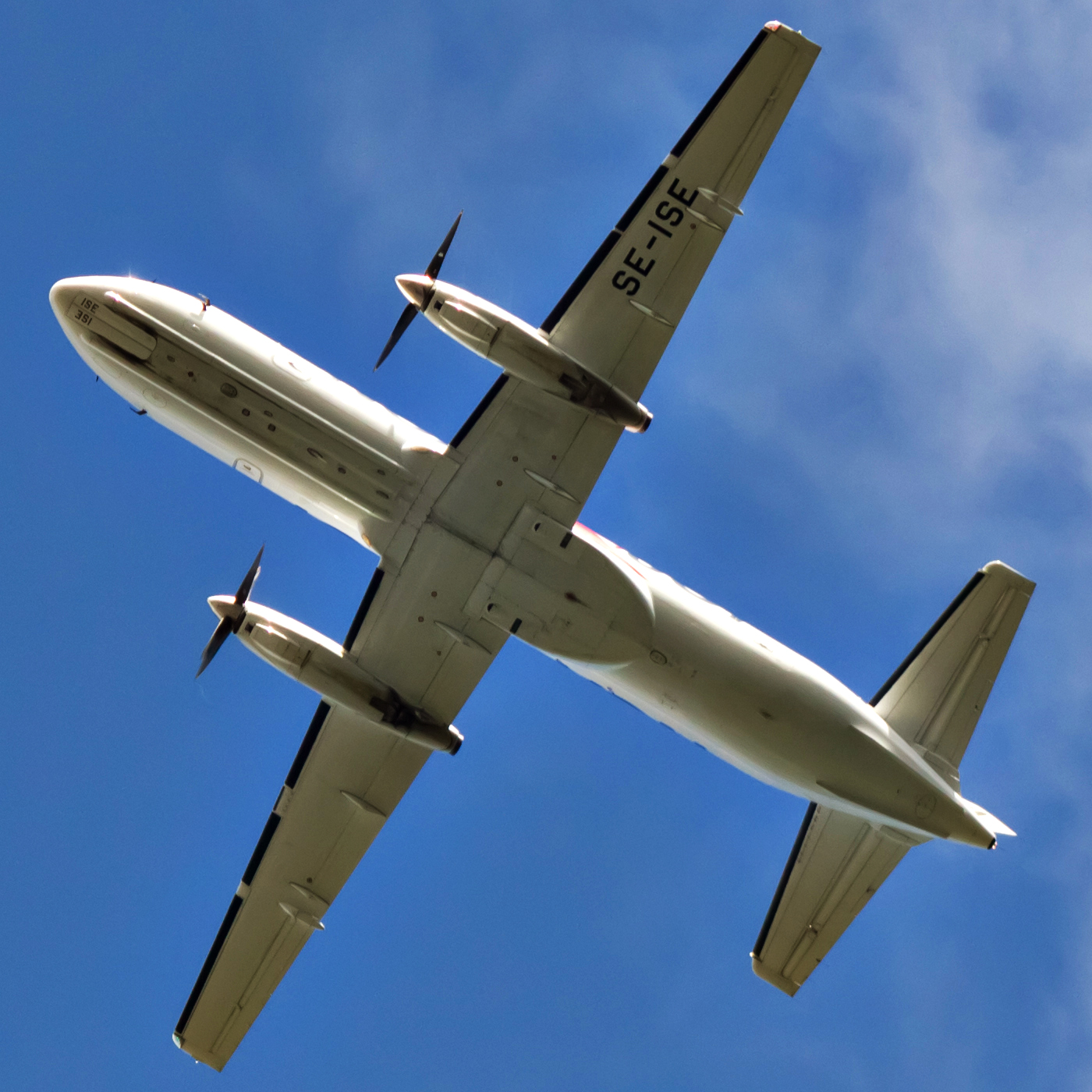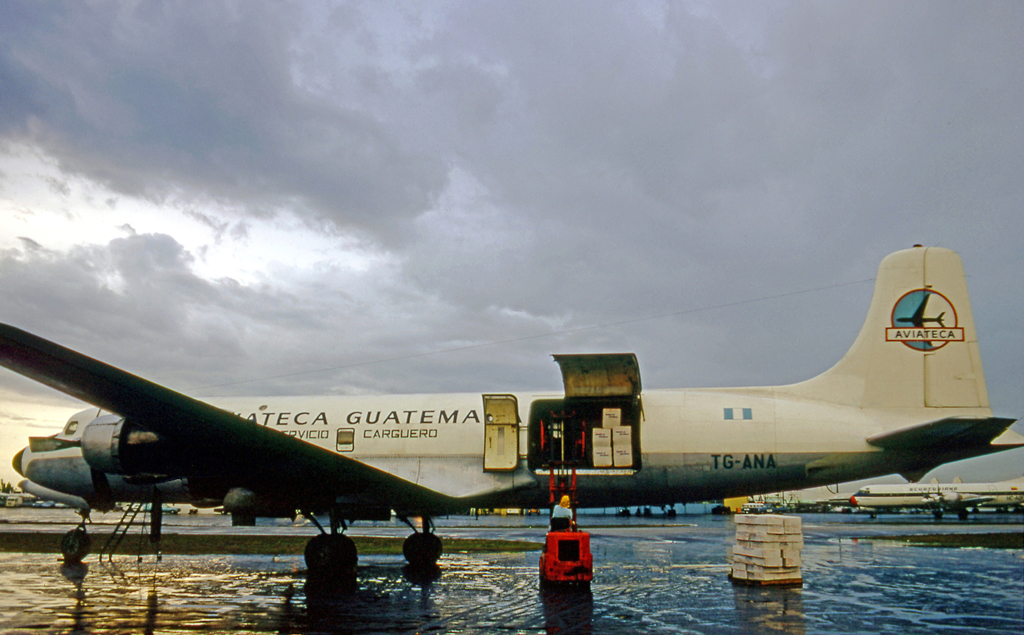|
Transportes Aéreos Guatemaltecos
Transportes Aéreos Guatemaltecos (TAG) is a private passenger and cargo airline with its headquarters in Zone 13 of Guatemala City, and with its main hub at La Aurora International Airport. It was founded in 1969 in Guatemala City. It currently has a fleet of 6 aircraft. TAG has around 400 employees and operates a maintenance facility at La Aurora International Airport. The hangars are located opposite to the main terminal building, on the east side of the airport. It operates regular flights between the capital and Mundo Maya International Airport in Flores, El Petén, Flores and offers charters, ambulance flights and agricultural flights, both domestic and to Belize, El Salvador, Honduras, and Mexico. TAG is the first airline in Guatemala to be certified by the ICAO. Scheduled destinations * La Aurora International Airport, Guatemala City, Guatemala * Mundo Maya International Airport, Flores, Guatemala * Puerto Barrios Airport, Puerto Barrios, Guatemala * Philip S. W. Goldson ... [...More Info...] [...Related Items...] OR: [Wikipedia] [Google] [Baidu] |
ATR 72
The ATR 72 is a twin-engine turboprop, short-haul regional airliner developed and produced in France and Italy by aircraft manufacturer ATR. The number "72" in its name is derived from the aircraft's typical standard seating capacity of 72 passengers. The ATR 72 has also been used as a corporate transport, cargo aircraft, and maritime patrol aircraft. To date, all of the ATR series have been completed at the company's final assembly line in Toulouse, France; ATR benefits from sharing resources and technology with Airbus SE, which has continued to hold a 50% interest in the company. Successive models of the ATR 72 have been developed. Typical updates have included new avionics, such as a glass cockpit, and the adoption of newer engine versions to deliver enhanced performance, such as increased efficiency and reliability and reductions in operating costs. The aircraft shares a high degree of commonality with the smaller ATR 42, which remains in production as of 2025. History ... [...More Info...] [...Related Items...] OR: [Wikipedia] [Google] [Baidu] |
Mérida International Airport
Mérida International Airport (), officially (Manuel Crescencio Rejón International Airport) , is an international airport located in the Mexican city of Mérida, Yucatán, Mérida. It serves as the primary international gateway to Mérida and the Yucatán, State of Yucatán, a popular tourist destination, offering flights to and from Mexico, the United States, Canada, Central America, and the Caribbean. The airport also accommodates facilities for the Mexican Airspace Navigation Services, and the Mexican Army, and supports various tourism, flight training, and general aviation activities. Additionally, it serves as a focus city for Viva (airline), Viva. The airport is named in honor of the jurist and politician Manuel Crescencio García Rejón, who was originally from Yucatán. It is operated by the Grupo Aeroportuario del Sureste (ASUR). The airport has become one of the List of the busiest airports in Mexico, fastest-growing airports in the country. In 2022, it handled 3, ... [...More Info...] [...Related Items...] OR: [Wikipedia] [Google] [Baidu] |
Let L-410
The Let L-410 Turbolet is a twin-engine short-range transport aircraft designed and produced by the Czech aircraft manufacturer Let Kunovice (named Aircraft Industries since 2005). It was developed as the ''L-400'' during the 1960s in response to an Aeroflot requirement for an Antonov An-2 replacement and performed its maiden flight on 16 April 1969. Since 1970, the L-410 has been in operation with a variety of customers, having been typically used as an airliner and a utility transport aircraft, numerous military air services have also adopted the type. The aircraft is capable of landing on short and unpaved runways and operating under extreme conditions from . Various models of the L-410 have been produced over the type’s production run of over fifty years; while initial aircraft were powered by imported Pratt & Whitney Canada PT6-27 engines, most models have been powered by domestically built Walter M601. Both the size and capabilities of the aircraft differ across the famil ... [...More Info...] [...Related Items...] OR: [Wikipedia] [Google] [Baidu] |
BAe Jetstream
The British Aerospace Jetstream is a small twin turboprop airliner, with a pressurised fuselage, developed as the ''Jetstream 31'' from the earlier Handley Page Jetstream. A larger version of the Jetstream was also manufactured, the British Aerospace Jetstream 41. Development Scottish Aviation had taken over production of the original Jetstream design from Handley Page, and when it was nationalised along with other British companies into British Aerospace (later BAE Systems) in 1978, British Aerospace decided the design was worth further development, and started work on a "Mark 3" Jetstream. As with the earlier 3M version for the USAF, the new version was re-engined with newer Garrett turboprops (now Honeywell TPE331) which offered more power (flat rated to 1,020 shp/760 kW with a thermodynamic limit of 1,100 shp/820 kW) and longer overhaul intervals over the original Turbomeca Astazou engines. This allowed the aircraft to be offered in an 18-seat optio ... [...More Info...] [...Related Items...] OR: [Wikipedia] [Google] [Baidu] |
ATR 72
The ATR 72 is a twin-engine turboprop, short-haul regional airliner developed and produced in France and Italy by aircraft manufacturer ATR. The number "72" in its name is derived from the aircraft's typical standard seating capacity of 72 passengers. The ATR 72 has also been used as a corporate transport, cargo aircraft, and maritime patrol aircraft. To date, all of the ATR series have been completed at the company's final assembly line in Toulouse, France; ATR benefits from sharing resources and technology with Airbus SE, which has continued to hold a 50% interest in the company. Successive models of the ATR 72 have been developed. Typical updates have included new avionics, such as a glass cockpit, and the adoption of newer engine versions to deliver enhanced performance, such as increased efficiency and reliability and reductions in operating costs. The aircraft shares a high degree of commonality with the smaller ATR 42, which remains in production as of 2025. History ... [...More Info...] [...Related Items...] OR: [Wikipedia] [Google] [Baidu] |
Saab 340
The Saab 340 is a Swedish twin-engine turboprop aircraft designed and initially produced by Saab AB and Fairchild Aircraft. It is designed to seat 30–36 passengers and, as of July 2018, there were 240 operational aircraft used by 34 different operators. Under the production arrangement in which production was split 65:35 between Saab and Fairchild, Saab constructed the all-aluminum fuselage and vertical stabilizer along with final assembly of the aircraft in Linköping, Sweden, while Fairchild was responsible for the wings, empennage, and wing-mounted nacelles for the two turboprop engines. After Fairchild ceased this work in 1985, production of these components was transferred to Sweden. On 25 January 1983, the Saab 340 conducted its maiden flight. During the early 1990s, an enlarged derivative of the airliner, designated as the Saab 2000, was introduced. However, sales of the type declined due to intense competition within the regional aircraft market. Saab decided to cea ... [...More Info...] [...Related Items...] OR: [Wikipedia] [Google] [Baidu] |
Embraer ERJ Family
The Embraer ERJ family (for Embraer Regional Jet) are regional jets designed and produced by the Brazilian aerospace company Embraer. The family includes the ERJ 135 (37 passengers), ERJ 140 (44 passengers), and ERJ 145 (50 passengers), as well as the Legacy 600 business jet and the R-99 family of military aircraft. Development of the ERJ 145 was launched in 1989. Its early design took the form of a turbofan-powered stretch of the existing turboprop-powered EMB 120 Brasilia regional aircraft. After the project was temporarily suspended in 1990, work on a revised configuration was undertaken during the early 1990s. While retaining the three-abreast seating of the Brasilia, the twinjet featured a new swept wing and is powered by two rear-fuselage-mounted Rolls-Royce AE 3007 turbofans for a range up to . By the time of its maiden flight on 11 August 1995, Embraer had garnered 18 firm orders, 16 options and 127 letters of intent for the type. On 10 Decembe ... [...More Info...] [...Related Items...] OR: [Wikipedia] [Google] [Baidu] |
Aviateca
Aviateca S.A. branded Avianca Guatemala is a regional airline headquartered in Guatemala City that serves as the flag carrier of Guatemala. Aviateca was under government ownership and remained so until 1989 when it joined the Grupo TACA alliance of Central America and was privatized. It was fully integrated into TACA, operating under the ''TACA Regional'' banner, which later merged with Avianca. History The airline was established in 1929 as Aerovías de Guatemala and was founded by Alfredo Denby Chattfield. In March 14, 1945, the airline was nationalized during the government of Juan José Arevalo and established as ''Empresa Guatemalteca de Aviación S.A.'' which was shortened to ''Aviateca''. One of the original founders was Alfredo Castaneda Duarte who also served as a pilot. Aviateca started operations in March 1946 and early aircraft operated by the carrier including the Douglas DC-3. In 1961, service to Miami was originated with four-engined Douglas DC-6 airliners. The ... [...More Info...] [...Related Items...] OR: [Wikipedia] [Google] [Baidu] |
Douglas DC-3
The Douglas DC-3 is a propeller-driven airliner manufactured by the Douglas Aircraft Company, which had a lasting effect on the airline industry in the 1930s to 1940s and World War II. It was developed as a larger, improved 14-bed sleeper version of the Douglas DC-2. It is a low-wing metal monoplane with conventional landing gear, powered by two radial piston engines of . Although the DC-3s originally built for civil service had the Wright R-1820 Cyclone, later civilian DC-3s used the Pratt & Whitney R-1830 Twin Wasp engine. The DC-3 has a cruising speed of , a capacity of 21 to 32 passengers or 6,000 lbs (2,700 kg) of cargo, and a range of , and can operate from short runways. The DC-3 had many exceptional qualities compared to previous aircraft. It was fast, had a good range, was more reliable, and carried passengers in greater comfort. Before World War II, it pioneered many air travel routes. It was able to cross the continental United States from Ne ... [...More Info...] [...Related Items...] OR: [Wikipedia] [Google] [Baidu] |
Panajachel
Panajachel (, Pana) is a town in the southwestern part of the Guatemalan Highlands, less than from Guatemala City, in the Departments of Guatemala, department of Sololá (department), Sololá. It serves as the administrative centre for the surrounding municipality of the same name. The elevation is . The population in the 2018 census was 15,077.INE, XII Censo Nacional de Población y VII de Vivienda - 2018 The town of Panajachel is located on the northeast shore of Lake Atitlán, and has become a center for the Tourism in Guatemala, tourism industry of the area as it provides a base for visitors crossing the lake to visit other towns and villages. "Panajachel" derives from the Kaqchikel language and roughly translates to "place of the Matasanos," the white sapote fruit tree. History Spanish colony In the 16th century, during the period of the Spanish conquest of Guatemala, the shore of the lake was the scene of a battle in which the Spanish and their Maya peoples, Kaqchikel ... [...More Info...] [...Related Items...] OR: [Wikipedia] [Google] [Baidu] |
Antigua Guatemala
Antigua Guatemala (), commonly known as Antigua or La Antigua, is a city in the Guatemalan Highlands, central highlands of Guatemala. The city was the capital of the Captaincy General of Guatemala from 1543 through 1773, with much of its Baroque-influenced architecture and layout dating from that period. These characteristics had it designated as a UNESCO World Heritage Site in 1979. Antigua Guatemala serves as the capital of the homonymous municipality and the Sacatepéquez Department. Population The city had a peak population of some 65,000 in the 1770s; the bulk of the population moved away in the late 18th century after the 1773 Guatemala earthquake. Despite significant population growth in the late 20th century, the city had only reached half that number by the 1990s. At the time of the 2007 census, the city had 34,685 inhabitants. History ''Antigua Guatemala'' means "Old Guatemala" and was the third capital of Guatemala, formerly called "Santiago de los Caballeros ... [...More Info...] [...Related Items...] OR: [Wikipedia] [Google] [Baidu] |








